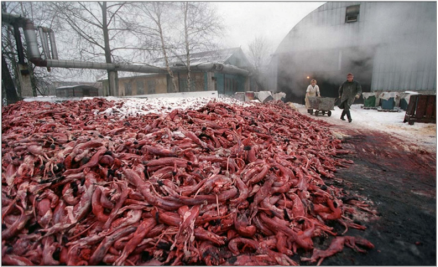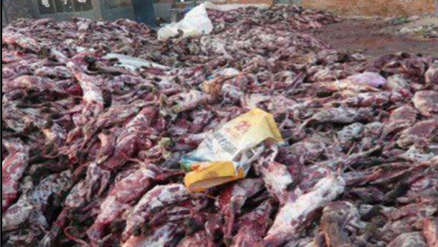Introduction to Animal Fur
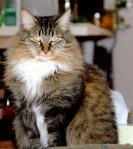 The animal fur opposition movement began in the 1800′s and surged in the U. S. in the 1970′s, becoming a major force during the 1980′s. It is part of the broader animal rights movement that includes animal abuse and aspects of animal equity. Some of the important events are included in the timeline on ask.com that was assembled by Doris Lin. The current resurgence of fur use in the fashion industry is sparked by new personal wealth in China and elsewhere. It shows how easy it is to awaken the human aptitude for horrifying atrocity.
The animal fur opposition movement began in the 1800′s and surged in the U. S. in the 1970′s, becoming a major force during the 1980′s. It is part of the broader animal rights movement that includes animal abuse and aspects of animal equity. Some of the important events are included in the timeline on ask.com that was assembled by Doris Lin. The current resurgence of fur use in the fashion industry is sparked by new personal wealth in China and elsewhere. It shows how easy it is to awaken the human aptitude for horrifying atrocity.
The rest of this post has facts and graphic images from the Fur Out the Closet blog.
YOUR FUR ITEM: BEFORE AND AFTER 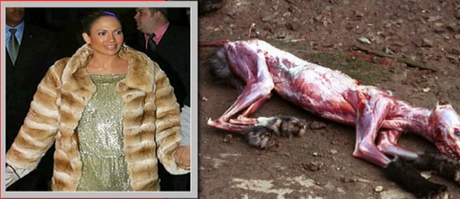
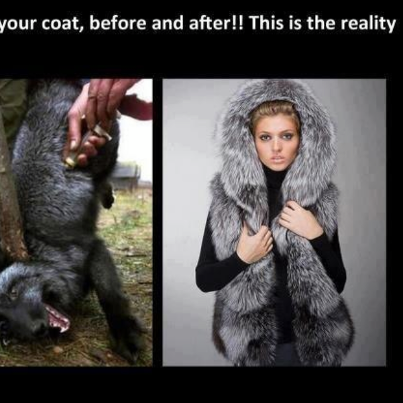
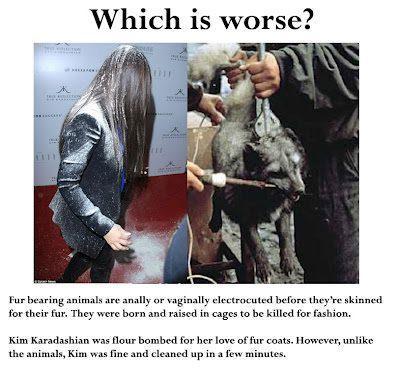
IS THIS SUFFERING FOR FASHION, CULTURE OR RELIGION WORTH THE COST TO OUR ANIMALS AND OUR ENVIRONMENT?


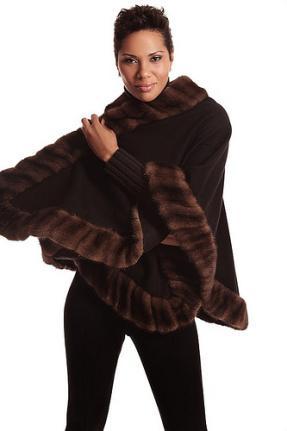
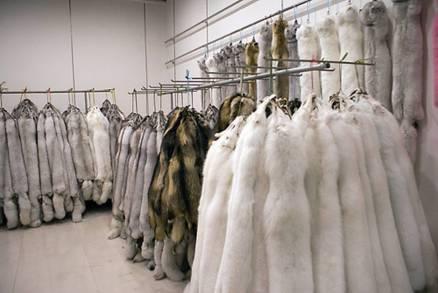
NO – DON’T BE LEFT BEHIND THE TIDE OF GLOBAL POPULAR OPINION AND LEGISLATION AGAINST FUR FARMING. PLEASE BAN THE SALE OF ALL FUR PRODUCTS! 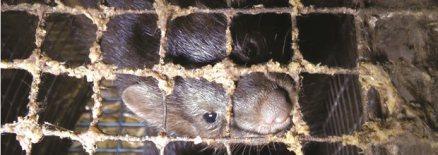
As Philip Wollen (Australian philanthropist and former vice-president of Citi Bank) from The Kindness Trust states, “fur farms are gulags of despair; they commit the most heinous of abuses for the most trivial of reasons” (January, 2013).
THE MAIN FUR BEARING ANIMALS IN THEIR NATURAL HABITATS

The animals most commonly farmed for their fur are minks, foxes, chinchillas and rabbits.
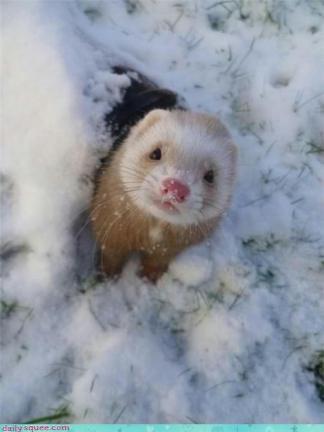
Minks are semi-aquatic and need water in the form of streams or lakes. A mink’s natural living environment is always near water or on wooded banks. Generally they are solitary and inquisitive animals except when they pair off during the mating season.
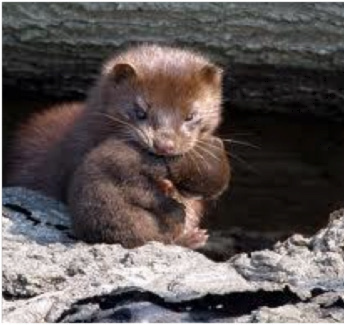
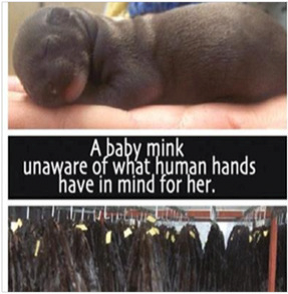
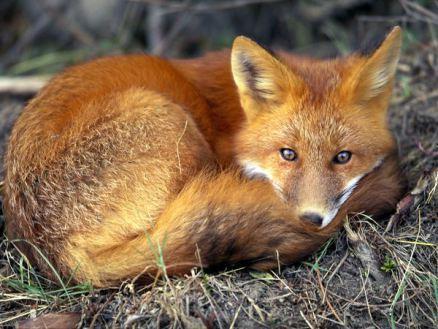
In their natural habitat, a fox’s territory can extend to several hectares, depending on the availability of food. They are solitary until the mating season when they form family units. A pair of foxes will parent their offspring in a den dug by the pair, which they use as safe base camps.

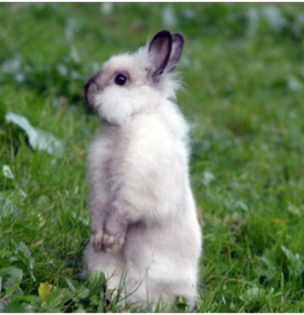
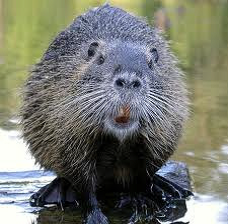
Beaver
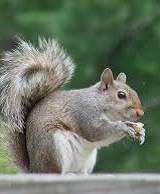
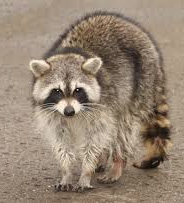
Read more at: http://www.peta.org/issues/animals-used-for-clothing/animals-used-for-fur.aspx
These wild animals need to be active and hence suffer intensely when bred on fur farms. In order to reap maximum profit, everything is aimed at being cost effective on these farms. There is no regard for the animals’ well-being, as they are merely seen as raw material waiting to be harvested (killed). They are routinely confined to small, wire-mesh cages and kept in a battery style system. With several animals in a cage there is barely room to move let alone space for activity. Minks on fur farms will never swim; foxes will never run; chinchillas will never jump and rabbits will never play .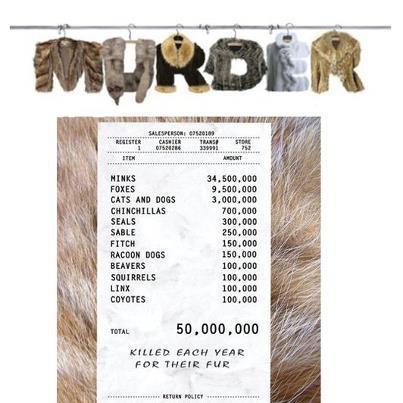
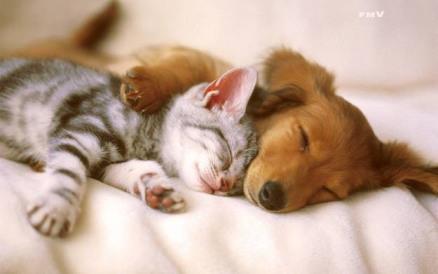
In certain countries, such as China, with poor animal welfare legislation cats and dogs (domestic animals) are also skinned for their fur. To cut down on costs and because a warm “carcass” is easier to skin, these animals are often skinned alive. 
REASONS FOR FUR FARMS
In this advanced age of synthetic fabrics, fur is totally unnecessary to keep warm. Wearing fur has become a fashion statement for egotistic people who falsely believe owning a fur increases their status in society.
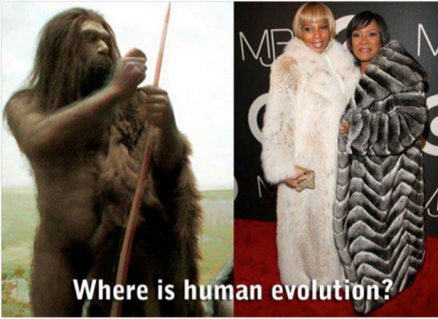
As a result of these individuals’ demand for fur, and a greed for money, fur farms have emerged in several European countries, which comprise 70% of all the fur farms on the planet. The rest of the world encompasses the remaining 30%. Dr Etwaroo’s research (2012) shows that 80% of today’s fur comes from fur farms, as compared to trapping. Trapping is no longer pervasive because it is too expensive.
Fur farming entails the breeding of certain mammals in captivity specifically for their pelts. Their bodies are disposed of and generally not used for anything else. Countries such as the United Kingdom (UK) have banned the farming of fur but still allow the selling of fur produce. Although South Africa does not have fur farms, there are retailers, such as Erich Fischer Furriers, that procure pelts from overseas and in this way collude with the abuse of precious animals and the environment.
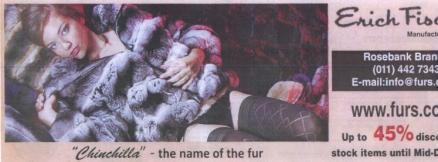
sexist and offensive
MILLIONS OF ANIMALS ARE BRUTALLY KILLED FOR THEIR FUR EVERY YEAR
Millions of animals are bred and killed in appalling conditions. One fur coat, depending on the type, requires the skins of many animals.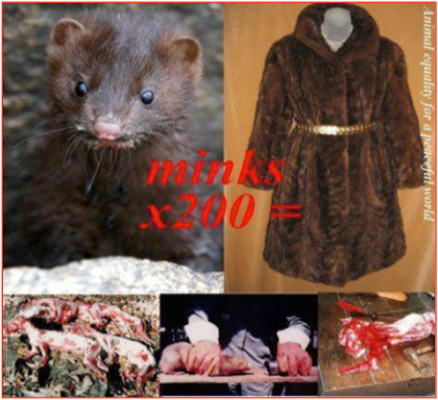
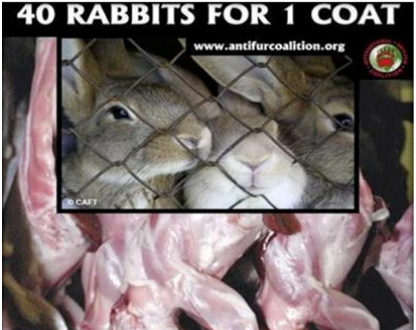
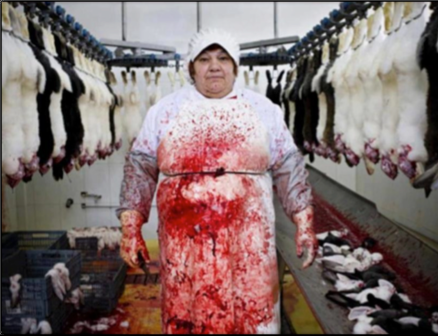
About 26 million minks are killed, usually asphyxiated, every year for the sole purpose of acquiring their skin. Many skins make one fur coat.
Chinchillas are also farmed for their furs, where 100-200 chinchillas are killed for one coat.
CONDITIONS ON FUR FARMS
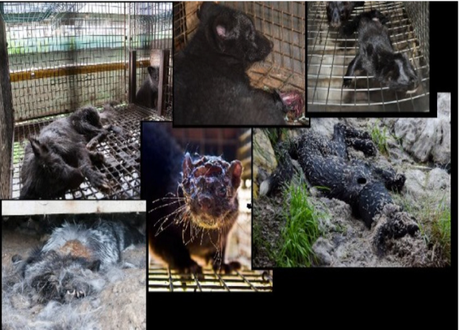
Inspections of fur farms by various animal rights groups have exposed widespread horrendous animal suffering.The following photographs were taken by various animal rights organisations, as listed below:
- Animal Liberation Frontline is well known for its extreme activism, such as releasing animals from their captivity on farms. This organisation has also taken photographs of fur farms in USA exposing shocking conditions.
- Coalition Against Fur Farms works in northern America. This organisation tracks fur farms and reports on where and when they open. It constantly exposes the horrendous conditions found on these farm.
- The Finnish animal rights organisation Oikeutta eläimille (Justice for Animals) did an undercover investigation of Finnish fur farms and photographed the torture these animals go through .
- The Network for Animal Freedom and Animal Protection Norway have done unannounced investigations of Norwegian fur farms.
- Zvirat Svoboda (Freedom for Animals) photographed farms within the Czech Republic, which revealed the torment suffered by the animals on these fur farms The Bont voor Dieren revealed shocking conditions through its research in the Netherlands.
-
Born Free is based in the United States of america. Researchers found that at times, farmers use homemade gas chambers, such as a box hooked up to a tractor exhaust pipe to kill minks. This method prolongs the suffering caused to these animal.
Regardless of the fur farm, intensive battery farming methods are used. Cages are lined up outside in extreme temperatures. In these temperatures drinking water can freeze and animals then die of thirst
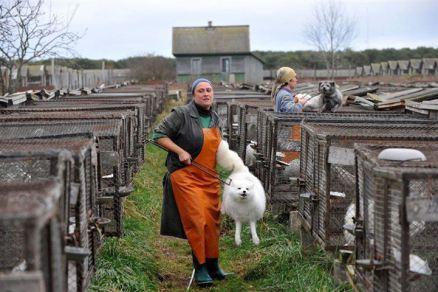
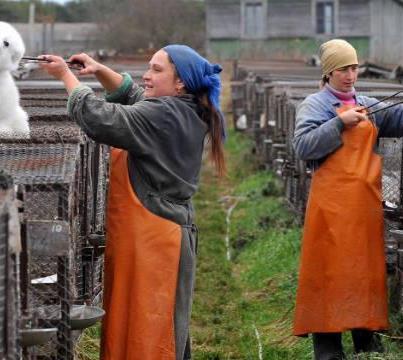

Otherwise they are kept in rows in giant sheds, as seen below, which are filthy and dark.
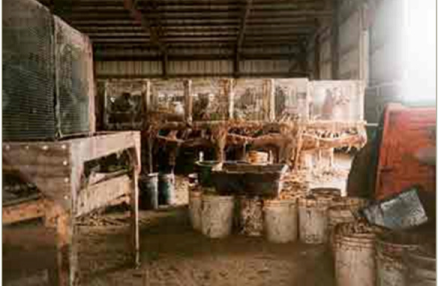
A battery system of farming is inherently cruel to animals.The wire-mesh cages are far too small and the wire, often rusty, can injure these creatures or cut their feet.
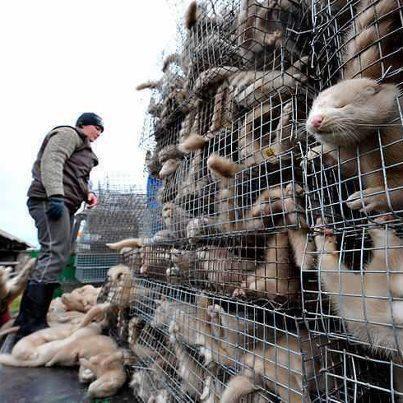
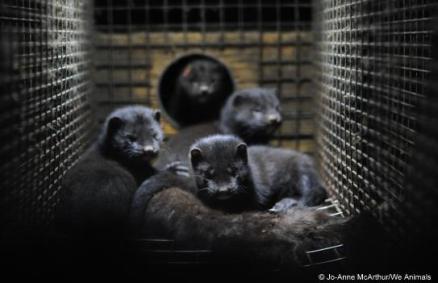

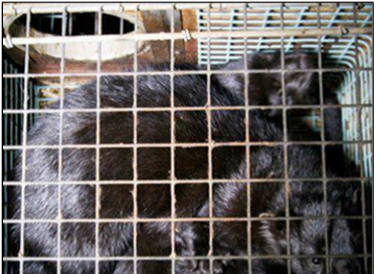
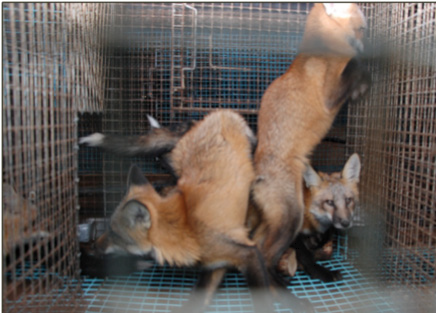
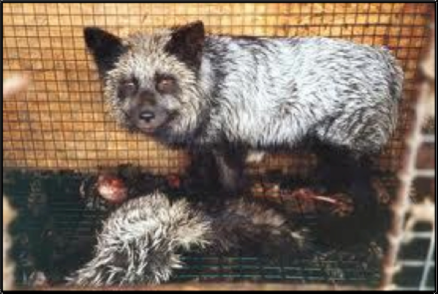 Raccoon dog on fur farm with the remains of a deceased mate, dead and rotting in the cage (Photograph: Animal Rights Alliance).
Raccoon dog on fur farm with the remains of a deceased mate, dead and rotting in the cage (Photograph: Animal Rights Alliance).






These desperate creatures often live in squalor, and are not adequately treated for parasites and ear mites. If the ammonia from accumulated faeces of the animals is not cleaned up, it will cause their eyes or lungs to burn.
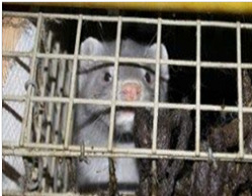
Gaping wounds were seen on these poor creatures, which had not been treated. This often led to infections and death. 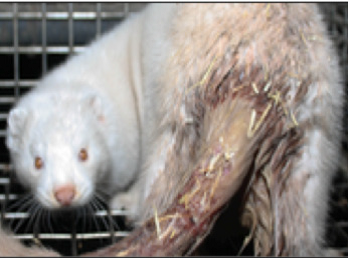

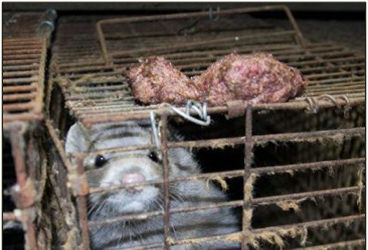

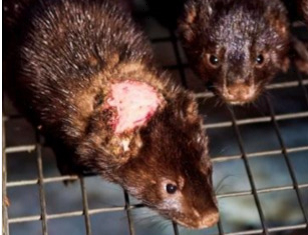
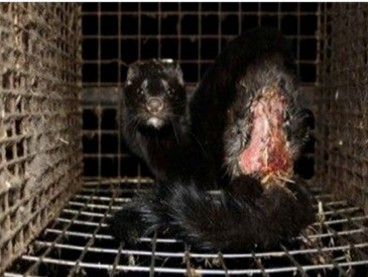
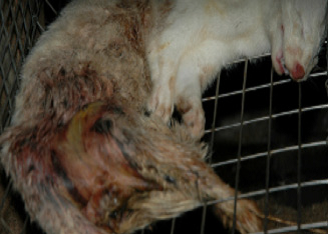
STRESS INDUCED BEHAVIOUR
Due to being kept in overcrowded, unnatural conditions, animals on fur farms go insane, displaying neurotic, stereotypic behavior. This repetitive, mindless behavior is not observed in minks in the wild. Please look at this video footage obtained by Swiss Animal Protection/EAST International. Link: http://vimeo.com/33860256
Minks indicate their distress through frantic back and forth compulsive movements. Stereotypic behavior 
There is self-mutilation, where animals in frustration chew off their own tails and legs.
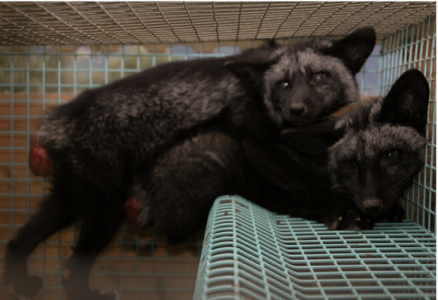
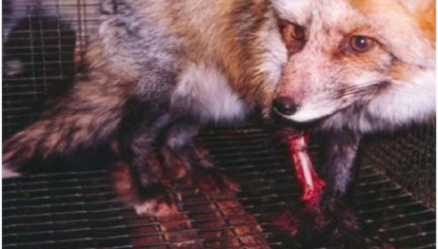
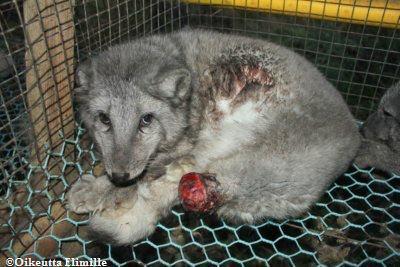
As a consequence of extreme stress and frustration, cannibalism has also been observed, which for these animals is abnormal behavior.
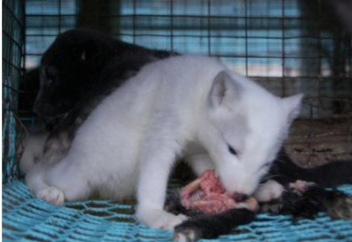

In the wild these animals are naturally solitary. They will, therefore, attack each other under prolonged conditions of stress, as found on all fur farms.
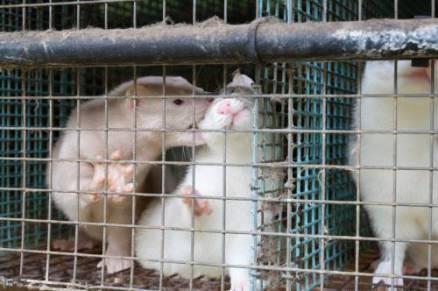
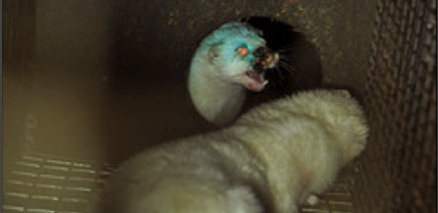
This leads to severe flesh and head wounds which remain untreated.
Eyes are poked out.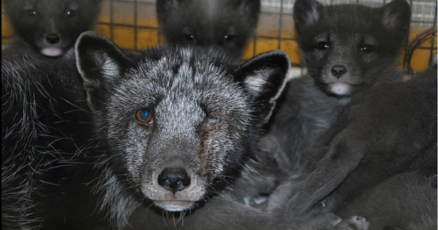
Animals lie anguished and depressed inside the cages, waiting for an agonising death (Freedom For Animals, 2012) 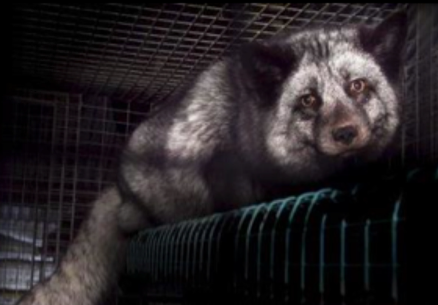
FEEDING ON FUR FARMS
Animals are fed meat by-products which are deemed unfit for human consumption. Mink feed consists of chicken and fish offal, supplemented with wheat flour and additives. This is usually in the form of a paste. The source of drinking water is usually by a drip system, which can freeze in winter or can fail through human error. Many animals die of thirst because of this (Etwaroo, 2012).
ENVIRONMENTAL IMPACT OF FUR FARMING
According to Occupy For Animals, “The intensive confinement of animals, in itself, has always been of environmental concern”. A number of NGOs including the Dutch Bont voor Dieren, the Belgian Global Action in the Interest of Animals (GAIA) and the Italian Lega Antivivisezione (LAV) asked CE Delft, a neutral Dutch company, to research the environmental impact of the fur production chain (2011). This was compared to the manufacture of synthetic materials.
Consequently CE Delft performed a life cycle assessment of fur production, to quantify the environmental impact of the various links in the production chain, “from chicken feed to piece of fur”, so to speak. According to this study, feed is the single biggest expense in raising mink. The Coalition Against Fur Farms considers the cost of feed to be a “weak link” in fur farming, as farmers often cannot afford adequate food for the animals. The production of feed alone has an impact on the environment.
Besides feed, Nitrous Oxide (N2O) and Ammonia (NH3) emissions from mink manure make a noticeable adverse impact on the environment.
With thousands of animals kept in a small area, the build-up of excrement is a concern, as it can be soaked into the soil and end up in the ground water. When it rains it can also run into nearby streams resulting in contamination. Each mink skinned produces about 20 kilos of faeces in his or her lifetime. Furthermore, fur farms are a source of air pollution due to the huge amount of ammonia produced.
Killing methods, such as gassing and electrocution, have an impact on the total carbon output. The pelt is removed from the carcass, cleaned and dried. However, fur is only natural on the animal who was born with it.
The removed skin is processed to transform the stiff pelt to fur, ready for further handling in the fashion industry. This process of chemical tanning stabilises collagen and protein fiber so the skins stop biodegrading. This use of toxic chemicals impacts on the environment. It was found by CE Delft that the climate change impact of 1kg of mink fur is five times higher than the highest scoring textile (wool).
Once these animals are skinned, their bodies should be incinerated but it has been found that many farms merely dump carcasses. Fur farms generate tens of tons of waste from slurry animal corpses and need 20 times more energy than that needed to produce “faux fur”.
METHODS OF KILLING THESE FUR-BEARING ANIMALS
To increase the profit margin, the cheapest possible methods are used for killing fur bearing animals. Also, to preserve the pelts, these creatures are put through agonising deaths. They are routinely gassed, anally/ vaginally electrocuted, poisoned, bludgeoned or have their necks broken. Gas (Carbon Dioxide CO2) boxes are used on mink farms where 30 to 50 mink are shoved into one box (see below). Although 100% carbon dioxide induces unconsciousness rapidly, lower concentrations are far less effective. For example, 70% CO2 fail to kill in less than 15 minutes. Of note is that the European Committee Working Party on laboratory animals does not recommend the use of this gas for any carnivore, because of the behavioural distress it causes (2001 – European Commission Health & Consumer protection directorate-general). At times, farmers use homemade gas chambers, such as a box hooked up to a tractor exhaust pipe (Investigation by Born Free). According to Born Free, anal or genital electrocution is one of the most frequently used methods of killing animals. The farmer puts a metal clamp in an animal’s mouth, a metal rod in the anus, and sends a high-voltage current surging through the body. This causes the animal to have a cardiac arrest while still conscious. Sometimes the power surge forces the rod out of the anus, so the procedure must be repeated to kill the animal.
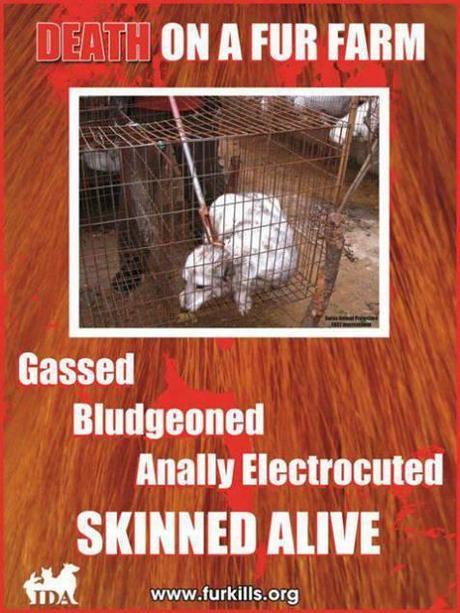
The following photographs show these methods of killing
Gassing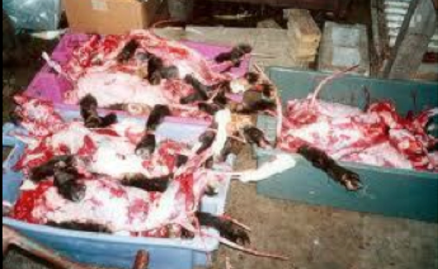

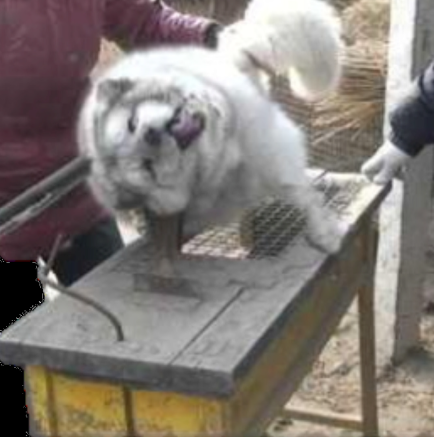
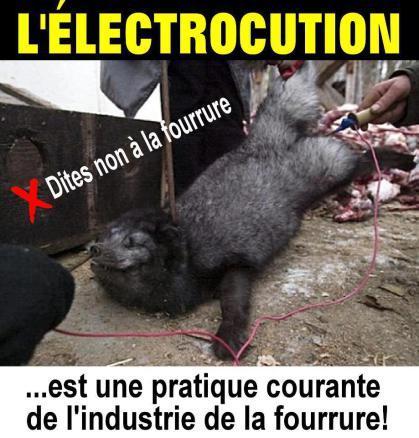
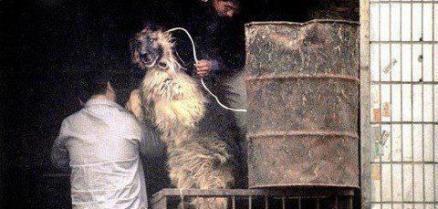
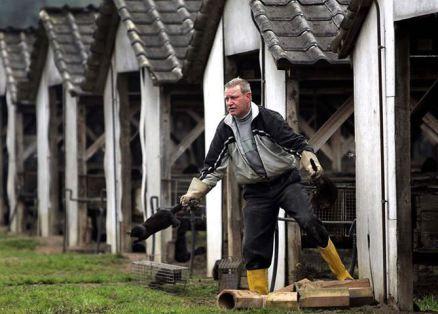

Breaking necks

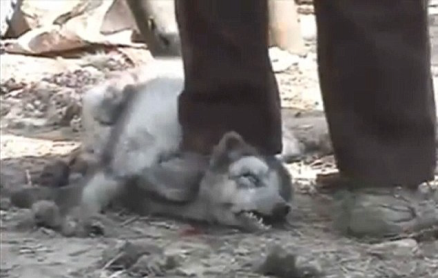
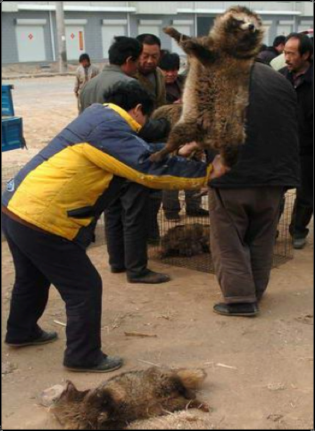
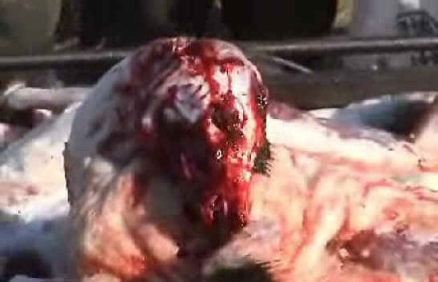
Swung by the tails and heads beaten into the ground, many are stunned but still alive before being skinned
SKINNING ANIMALS
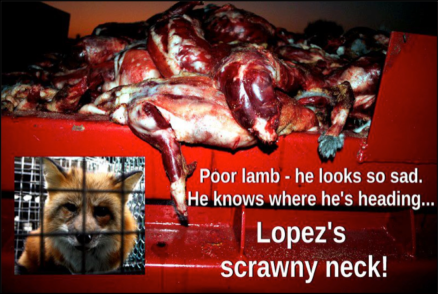
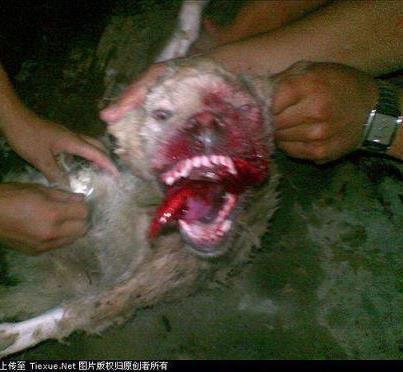
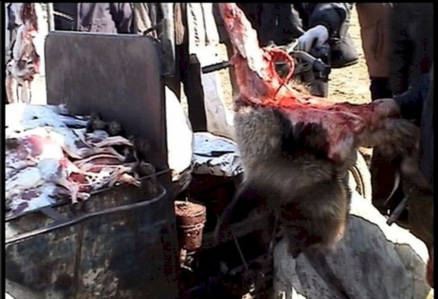
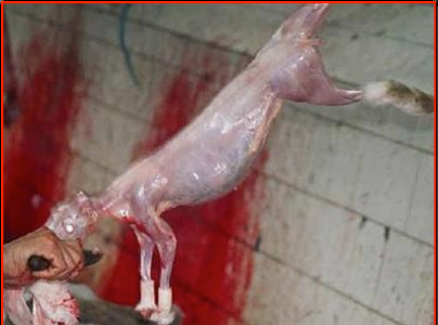

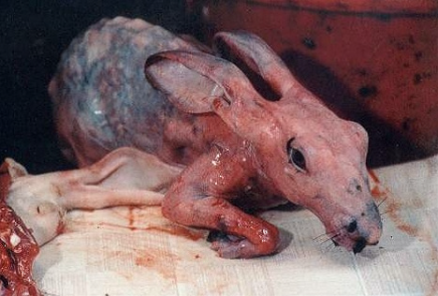
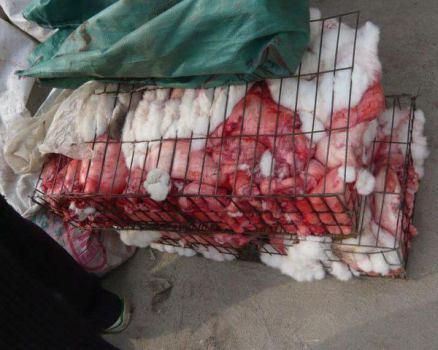
Thousands of pelts 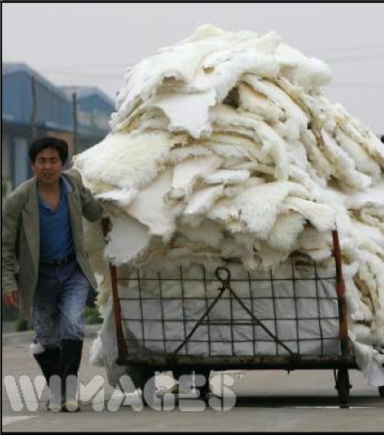
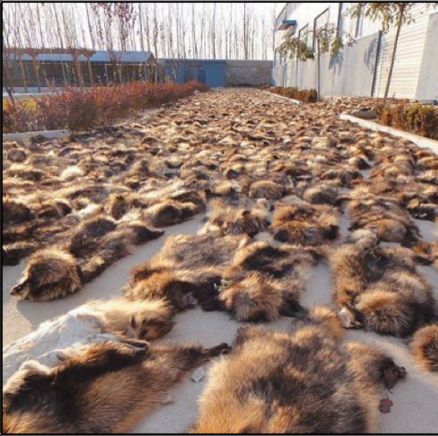
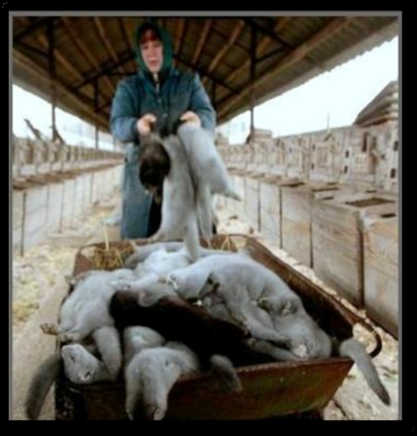
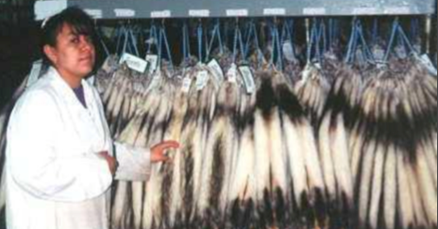
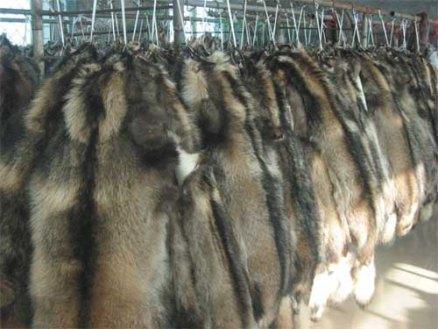
As a result of this fur production, millions of carcasses need to be disposed – many are just dumped. This is a potential environmental hazard. 